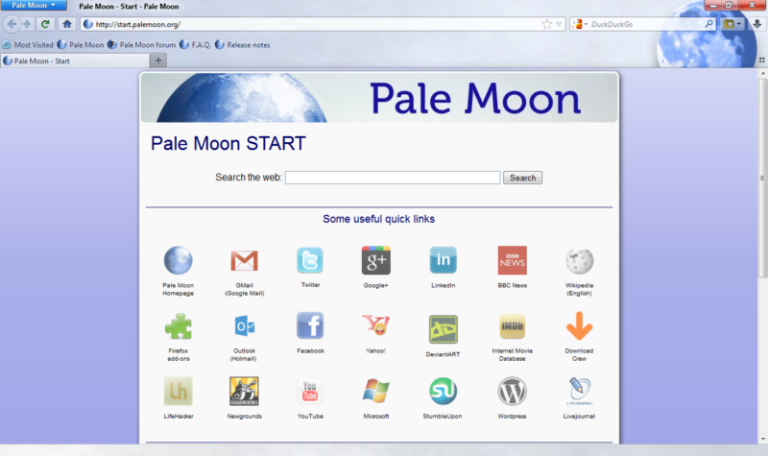

The biggest difference is the result of the layout engine, and the way it works.

Pretty much every media is supported, and the addition of improved scaling for vector images was a welcome touch. While Pale Moon is originally based on the Gecko Firefox browser engine, the adoption of Goanna marks a definitive split away from the Mozilla browser. That said, Goanna is still fairly similar to Firefox in lots of ways. Pale Moon now comes with its own browser rendering interface, Goanna. Pale Moon has also updated a lot of its internal security features, including adding support for 128 bit Camelia GCM ciphers and the removal of several modules whose security had become hazardous due to the passage of time. The new graphics and presentation update have also worked wonders and it’s fast. I also liked the dropdown history button, and the way it’s positioned next to the history bar, so there’s very little fiddling to be done. In some ways it’s like having a second desktop, and I found it easy to navigate and work my way round quickly. It’s colourful, and the home splash screen can be customised to carry whatever news, link buttons, or feeds you want it too. It aims to not waste computer resources and power on inefficient programs, while at the same time serving a wide range of systems that are currently in use around the world.I’ve used a lot of different browsers over the years and I remember writing about the Linux based Pale Moon browser back in 2014, and I liked it. But now Moonchild Productions has released Pale Moon 26.0, the browser’s first big update in two years, and the new build has some really nice new things going for it. Pale Moon is a middle road, cutting away support for ancient systems to achieve a significant speed and efficiency increase, but not trying to squeeze the last few percent more out of it by limiting the range of systems it will run on even more. Linux) with regards to programs being compiled specifically for the capabilities of the machine it is installed on, it became obviously clear that Windows users were at a disadvantage: Mozilla only releases windows executables with maximum compatibility in mind, meaning that Firefox is made to run on as many different systems as possible, sacrificing efficiency and speed in the process to be compatible with, by current standards, absolutely ancient hardware. Having seen the advantages on other systems (e.g. Pale Moon is the work of a single individual, using contributed Open Source code to create a full-featured, speed optimized version of the popular Firefox browser.


 0 kommentar(er)
0 kommentar(er)
